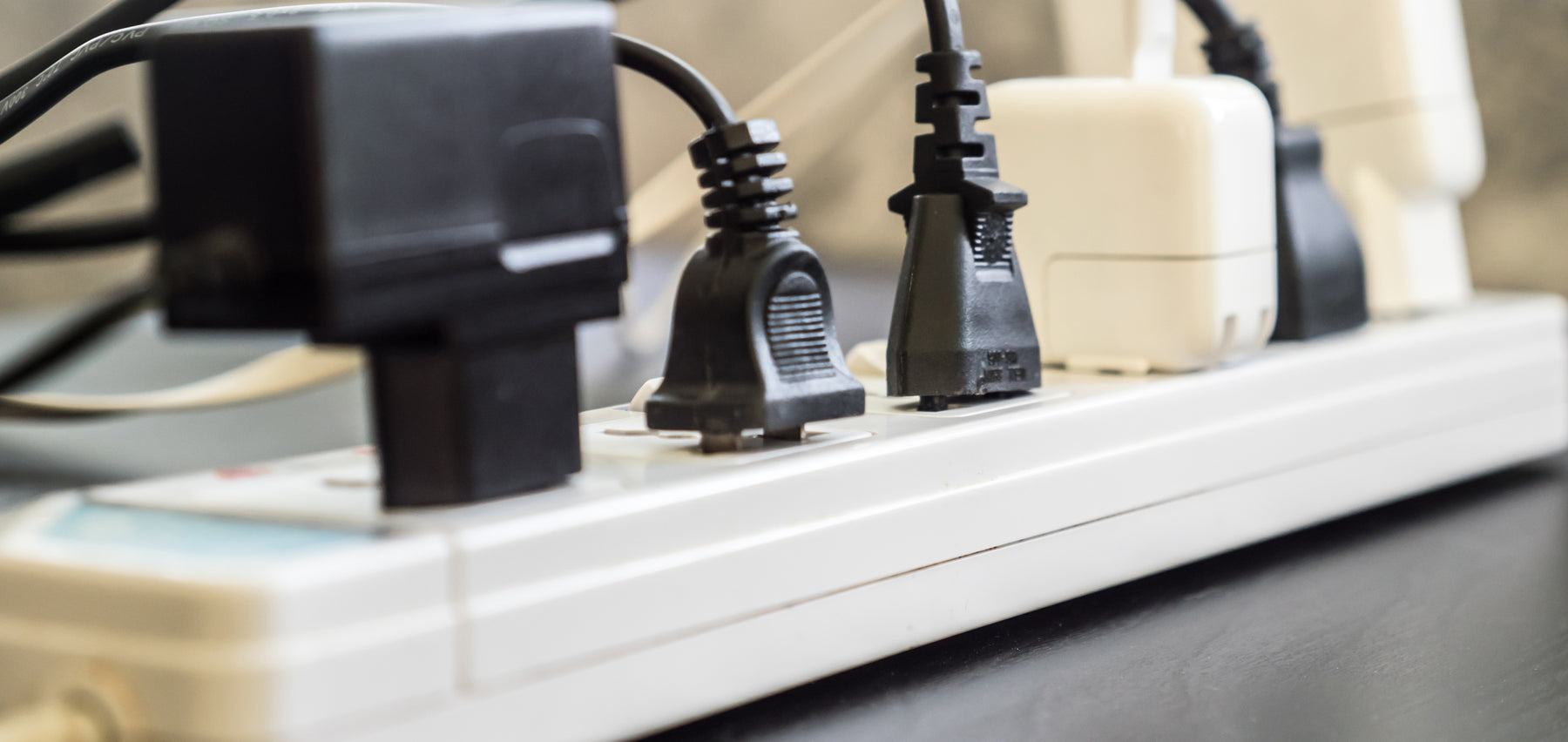
When should I throw away my old surge protector?
Purpose of a Surge Protector
If you didn’t know this already, surge protectors play an important role in keeping your home appliances and electronic devices from being zapped by power surges. Have you ever been at work or school and you finally come home to relax to watch some TV but you notice that when you pressed the power button nothing happened. Then you come to realize the small light on your surge protector is off and you flip the switch back, to turn on your TV. This is usually due to a power surge caused by one of your in-home appliances that can range from a refrigerator, power tool, or even a vacuum. Anything that temporarily draws a large current and then abruptly shuts off is likely to cause a surge. Every single house will experience surges. For instance running a vacuum off the same power strip, if a surge causes the circuit breaker to trip on the surge protector, there’s actually a high chance the other devices that are plugged in, will be damaged. Surges are constantly taking place in the household. Situations like flickering lights when your refrigerator’s motor kicks on, the fridge temporarily draws more power when the motor comes on. When it shuts off the power should go back to the wall panel and should dissipate without damaging anything else. However, if it’s an older surge protector it is also possible that the surge power can spread out to the connected electronics. This can possibly happen throughout the years; each surge power strip can only absorb large amounts of power and protect your connected devices for so long. Surge protectors have two main purposes, to allow you to plug in multiple components and to protect devices that are plugged by absorbing the constant inevitable surges in your home.
Many people don’t realize how much this device regulates electricity efficiently throughout a home. Think of a dam that blocks water from coming into a city. The dam allows a bit of water to flow through smoothly, in return it makes an energy source to fuel the town. Just like a surge protector allowing the correct amount of electric flow through your devices/appliances. The water flow through the dam represents the electric flow through your house into your surge protector. Then becomes the dam and regulates the correct amount of energy to enter. However, unlike a dam that can last for half a decade without maintenance, a surge protector cannot withstand the long periods of constant surges. When a surge occurs, the indicator light on your surge protector will trip and shut off to avoid any harmful electric jumps to your devices. This is the key concept to realize that surge protectors will fail someday and don’t last forever. It’s important to know the hazards and causalities that can be caused by an old surge protector.
Few Scenarios
There are few important situations that can occur to your surge protector that might influence you to want to buy a new replacement. As mentioned before the surge protector power strip absorbs continuous bombardment of surges in your home. The average surge protector will last approximately 2-3 years, depending on the number of surge events it can bare. Over a period of time, as it continues to do its job, it will lose the ability to stop incoming surges. This happens when the MOV’s in your surge protector finally give out. A metal oxide varistor are the electronic components in surge protectors that absorb the energy/electricity in a surge. They conduct large currents to eliminate the extra/harmful voltage to your plugged in devices.
When this happens the surge light on the protector won’t appear anymore and only the grounded indicator light would be visible. This would be the right time to purchase a new replacement because the surge protector will no longer be able to protect your devices. Some surge protectors even stop providing power after their MOVs are no longer working. Even if there is nothing wrong with the current surge protector, it is vital that you switch it out after a few years. For instance, the surge protector I currently have in my living room that supports my entertainment system and internet devices has been working for about 4 years now and should be replaced. Versus the surge protector I keep in my workshop shed that supports all my power tools has been working for one year but the protector indicator light is no longer visible. I typically use the shed each weekend, in doing so the power tools extract large amounts of energy versus my entertainment system. This causes the surge protector to wear out more quickly. The farther from a surge causing device, the more likely the surge protector will last a long time.
If your home is hit with lighting, more than likely your surge protector won’t be able to absorb those large amounts of electricity anymore. You would most likely need a new replacement because that surge protector won’t function properly. There are no surge protectors that can shield your devices from lighting. The best solution would be to unplug your devices during a lighting storm. This will help to eliminate any possible chances of your devices from being damaged, if your home were to be hit with a lightning bolt.
There are a few obvious things we should point out on when you should replace your surge protector. If you ever see or think that your surge protector got potentially damp or wet then it’s recommended you switch it out. Sometimes people but these in certain damp areas without even knowing or considering the environment. Or, if you ever experience a smoky or burnt smell coming from your surge protector, than more than likely it has served its purpose or malfunctioned and should definitely be removed and replaced with a new one. We also warn against daisy chaining surge protectors together – they were not designed to function this way. If you daisy chain them, this is basically connecting multiple surge protectors together. Virtually all manufacturers warn against this.
Tips and Tricks
Going to recommend a few things to help you remember how to keep track of your surge protector.
- Indicator Light: If the surge indicator light on the surge protector is no longer working than you will need a replacement.
- Keep your receipts: There have been few situations where it goes out in a day or two, perhaps due to a malfunction in the surge protector. In this case you would be eligible for a replacement if you have your receipt. If it’s an older surge protector that is no longer functioning, it most likely did its job and you need to buy a replacement. If the surge protector only worked for a month, good chances it did its job and there is a shortage occurring in your home causing lots of surge spikes.
- Consult Customer Service: If you tend to have questions about warranty or when replacing the item then maybe try calling the customer service department of the company’s brand in which you bought the surge protector from. This will give you the opportunity to get feedback ASAP if dealing with any issue with your surge protector. They will provide you with credited information and facts about how or when to replace your device.
